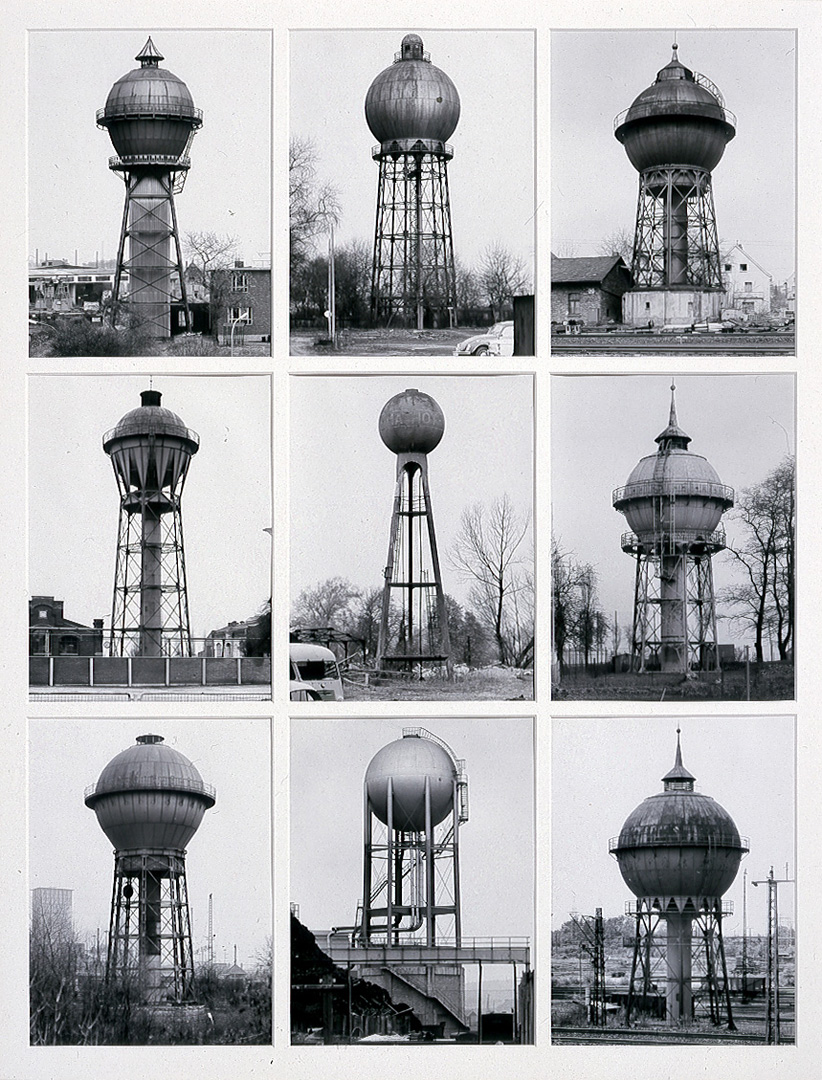Typology (in urban planning and architecture) is the classification of usually physical characteristics commonly found in buildings and urban places, according to their association with different categories, such as intensity of development (from natural or rural to highly urban), degrees of formality.. Individual characteristics form patterns. Patterns relate elements hierarchically across physical scales (from small details to large systems). The definition of ‘typology’ is “a classification according to general type, especially in archaeology, psychology, or the social sciences”. Essentially it is the study of types.
Bernhard Becher, and Hilla Becher, were German conceptual artists and photographers working as a collaborative duo. They are best known for their extensive series of photographic images, or typologies, of industrial buildings and structures, often organised in grids. As the founders of what has come to be known as the ‘Becher school’ or the ‘Düsseldorf School’ they influenced generations of documentary photographers and artists.
Meeting as students at the Kunstakademie Düsseldorf in 1957, Bernd and Hilla Becher first collaborated on photographing and documenting the disappearing German industrial architecture in 1959. They were fascinated by the similar shapes in which certain buildings were designed and noticed many industrial buildigns shared many distinctive formal qualities.

Together, the Bechers went out with a large 8 x 10-inch view camera and photographed these buildings from a number of different angles, but always with a straightforward point of view. They shot only on overcast days to avoid shadows, and early in the morning during the seasons of spring and fall. Objects included water towers, cooling towers, coal bunkers, oil refineries, blast furnaces, gas tanks, storage silos, warehouses and much more. Their work also highlighted the need for preservation of these buildings. The end result of their work presented us with groups of photos in a grid of six, nine, or fifteen that highlighted the similarity between industrial structures. It is a very interesting concept to look at for the viewer which engages them to compare the forms and designs of the buildings.

